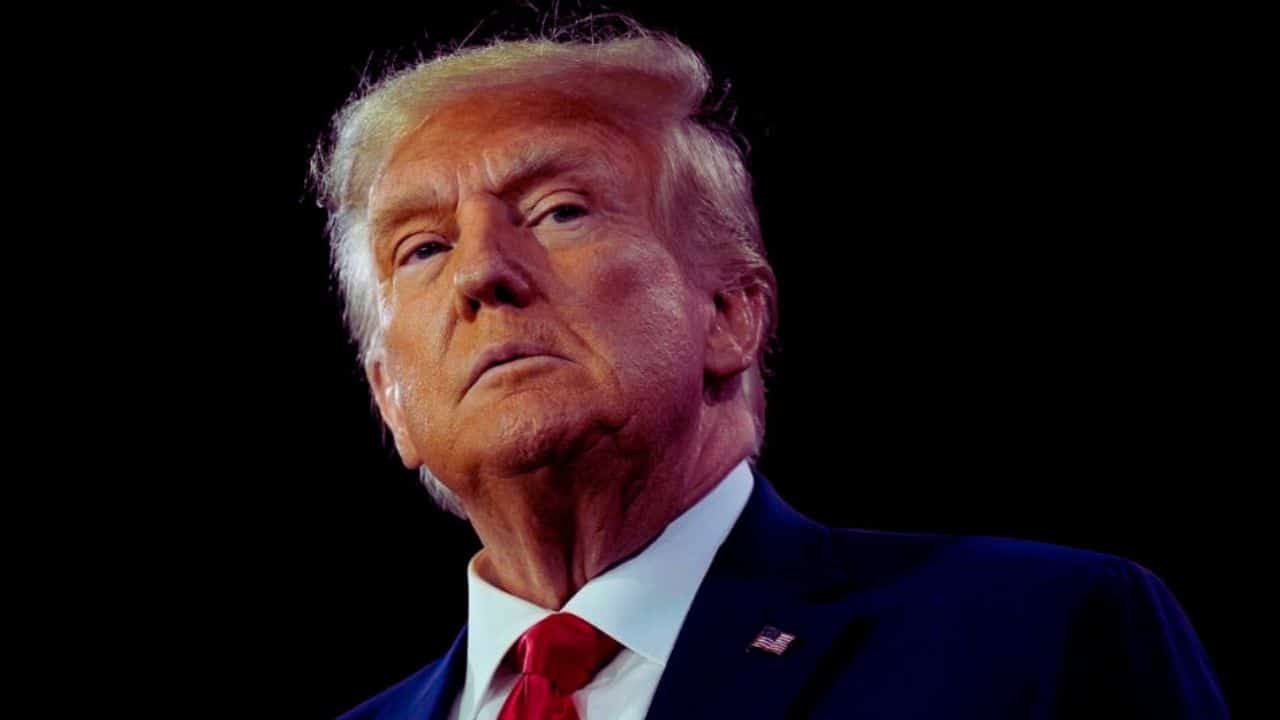In a night that will be remembered as one of the most significant in recent U.S. political history, Donald J. Trump has secured his return to the presidency, defeating Vice President Kamala Harris in a contentious and closely watched election. Early Wednesday morning, Trump announced his victory from Florida, declaring his campaign the “greatest political movement of all time” and promising to usher in a new “golden age” for the United States. Standing before a cheering crowd near his Mar-a-Lago estate, Trump’s win completes a rare political feat—making him only the second president in American history, after Grover Cleveland in 1892, to serve two nonconsecutive terms. This dramatic comeback is all the more remarkable considering the series of legal battles and political setbacks Trump has faced since leaving office.
A Comeback Defined by Resilience Amid Legal and Political Storms
Trump’s path back to the presidency was anything but smooth. After his defeat in 2020, he refused to concede and continued to maintain that the election had been “stolen.” His claims fueled widespread controversy and culminated in the Capitol attack on January 6, 2021—a violent attempt by some of his supporters to stop Congress from certifying the election results. This event, widely condemned across the political spectrum, seemed to cement Trump’s status as a polarizing figure in American politics.
In the years that followed, Trump faced multiple legal challenges. He was indicted on four separate criminal charges, leading to a total of 91 felony counts. These cases ranged from accusations of election interference and mishandling classified information to allegations of inciting violence. Additionally, a civil case against him and his business resulted in a $354 million judgment. Trump was also found liable for sexual abuse and defamation in another high-profile trial, further deepening the legal pressures around him. Yet, despite these seemingly insurmountable obstacles, Trump remained defiant, often framing the charges as politically motivated efforts to stymie his influence.
“The real verdict is going to be November 5, by the people,” Trump declared earlier this year, signaling his belief that the American electorate would ultimately decide his fate. In the end, the voters delivered, granting him a return to the presidency and a new opportunity to shape his legacy.

Trump’s Strategy: Reaching Voters Beyond Traditional Channels
Trump’s path to victory was marked by an unconventional campaign strategy. Rather than focusing on mainstream media and traditional advertising, Trump’s team pivoted to new media, particularly social media platforms and alternative channels that resonated with young men and minority voters. High-profile appearances on popular non-political podcasts allowed Trump to connect directly with audiences who are often overlooked by traditional campaign outreach. This approach enabled him to build a coalition that extended well beyond his established MAGA base, appealing to a broader spectrum of disaffected Americans, particularly among working-class and minority communities.
The strategy of sidestepping conventional media proved effective. Throughout election night, Trump’s gains became apparent, with him outperforming his 2020 results in key states and demographics. His message of restoring “law and order” and addressing public safety concerns resonated deeply in communities that felt left behind by the current administration’s policies. Trump’s emphasis on economic growth, inflation control, and job creation also struck a chord, helping him to make inroads with traditional Democratic voting blocs.
Breaking New Ground: Unprecedented Shifts in Hispanic and Working-Class Voters
Trump’s campaign saw unprecedented shifts in regions traditionally dominated by Democrats. In Allentown, Pennsylvania—a majority Hispanic city—Trump expanded his margins by 13 points, indicating a significant realignment among Hispanic voters. His success extended to Starr County in Texas, a historically Democratic border county that is more than 90% Hispanic. Trump had lost this county by 5 points in 2020, and by a staggering 60 points in 2016. This year, however, he won Starr County by 16 points, marking an astonishing 76-point shift toward the GOP over just eight years.
Similar gains were seen nationwide. Trump improved his standing even in traditionally Democratic strongholds, closing the gap in New York with a 56-44 percent result, while Harris trailed Trump in Florida with a 56-43 percent margin. According to AP vote tallies, Trump made gains in every state except for Utah and Washington, a testament to the broad geographic reach of his appeal.
A noteworthy shift also occurred among working-class voters, who, despite favoring Biden in 2020, shifted their support to Trump this time around. Among voters earning less than $50,000, Trump won by a point, a demographic that had favored Biden by 10 points previously. Voters in the $50,000-$100,000 income bracket, who had supported Biden by a 15-point margin, also turned to Trump, giving him a 2-point advantage. These shifts signal a realignment of the working class toward the GOP—a trend that could shape the party’s future for years to come.
Economic and Public Safety Concerns Propel Trump’s Victory
Analysts widely credit Trump’s success to his focus on issues that deeply resonated with voters. Economic challenges, public safety concerns, and rising inflation dominated the national conversation, and Trump’s campaign capitalized on these topics. By prioritizing economic stability, addressing crime rates, and proposing solutions to reduce inflation, Trump was able to appeal to voters who felt the Democratic administration had not adequately addressed these pressing concerns.
Spiro Amburn, a Georgia-based GOP strategist, told Newsweek, “The American people clearly spoke regarding the failure by Democrats to address the issues of public safety and the economy.” This message was reinforced across Trump’s campaign, with surrogates and supporters consistently emphasizing his track record on economic growth and his plans for restoring order.
Republicans Reclaim the Senate and Strengthen Trump’s Legislative Power
In addition to the presidential win, the Republican Party gained control of the Senate, setting the stage for Trump to implement his agenda with less opposition. With the Senate now in GOP hands, Trump will likely face fewer obstacles in confirming his cabinet picks, judicial nominations, and other key appointments. The status of the House of Representatives remains uncertain, but a Republican-led Senate is already a significant boost to Trump’s legislative influence.
Legal Troubles on Hold as Trump Prepares to Take Office
Trump’s legal battles are now in a state of uncertainty. While some cases are expected to continue, others may face delays or be dismissed, given the complexities of pursuing charges against a sitting president. This shift dramatically alters Trump’s trajectory from being a former president embroiled in legal disputes to an incumbent with executive power and substantial support within his party. The implications for Trump’s pending legal issues remain to be seen, but his win has undoubtedly changed the context in which these cases will unfold.
What’s Next: Trump’s Second Term and Its Implications for U.S. Politics
Trump’s return to the White House marks a pivotal moment in American politics. Many supporters believe he will bring a bold vision for his second term, which could include restructured policies on immigration, trade, and national security. His stance on reshaping government institutions and reasserting conservative values is likely to define his legacy and influence the direction of the GOP.
However, some political analysts are cautious about interpreting his win as a clear mandate. Trump’s victory, while significant, may lack the sweeping approval that characterized Ronald Reagan’s re-election in 1984, which was considered a definitive endorsement of his policies. Trump’s win reflects a divided nation, and he may face challenges in unifying the country as he navigates his return to power.
The Biden Era and Lessons for Future Generations
President Joe Biden’s tenure provides a cautionary example for future leaders. Entering office in 2020 with a message of unity and generational change, Biden encountered obstacles that hampered his popularity. Economic struggles, rising inflation, and public concerns about his age impacted his approval ratings. Though Biden aimed to serve as a bridge to a new generation of leadership, his decision to seek re-election underscored the divide within the Democratic Party. This divide, coupled with discontent over economic issues, created an environment favorable for Trump’s comeback.
Trump’s Vision and the Road Ahead
As Trump prepares to take the oath of office, he does so with a clear agenda aimed at reshaping the federal government and reinforcing conservative policies. His return marks a new chapter for the Republican Party, and his influence on the political landscape is undeniable. Trump’s resilience and ability to adapt in the face of adversity have positioned him as a defining figure in modern American politics. His supporters are optimistic that his policies will lead the country into a prosperous future, while his opponents remain watchful of the implications of his return.
For now, Trump’s victory has altered the course of American history. His commitment to his vision, combined with his determination to deliver on his promises, sets the stage for a consequential four years. As he moves forward, the nation—and the world—will be watching closely to see how Trump’s second term unfolds and how it will shape the future of the United States.







































